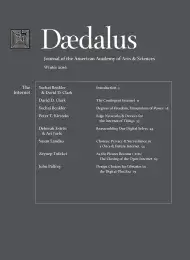Edge Networks & Devices for the Internet of Things
This paper considers how existing concepts underlying the development of the Internet are being strained in the emerging Internet of Things (IoT). It also explores how the well-known and tried Domain Name Service concepts, which map hierarchic names to addresses, can be extended for the IoT. The extension greatly broadens the concept of name/address mapping to digital objects with identifier/attribute database mapping for physical objects, applications, and data. Finally, this essay discusses the properties of the identifier management systems, showing how scalability, security, and flexibility can be supported in the IoT.
The initial aim of the Internet was to develop a system that would allow computers to connect together, irrespective of their location or individual method of connection. That system grew to connect the several billion systems in use today. The Internet is now becoming the Internet of Things (IoT), embracing the hundreds of billions (or trillions) of digital devices that can sense or activate aspects of our lives. The IoT is still in its infancy: the state of networks and variety of equipment types in the IoT today is comparable to that at the onset of the Internet, from 1975–1980. In this essay, we explore some of the theory behind the design of the Internet, and consider the ways in which the needs of the IoT fundamentally differ. At the same time, we will examine similarities between the development and growth of the Internet and the IoT. Of course, Internet protocols (IP) have developed hugely since the Internet’s youth. We will not consider the core of the Internet in this paper, but will focus on what new demands the IOT may make on that core.
Even thirty-five years ago, it was clearly important to link together the many network deployments of different architectures. But there was a question whether to choose to adapt between network types or wait for universal adoption of the same type. Adoption eventually won out, though it took fifteen years. . . .
